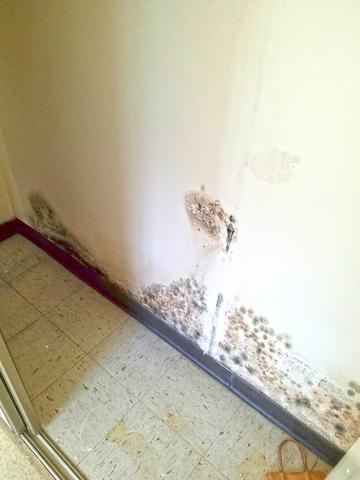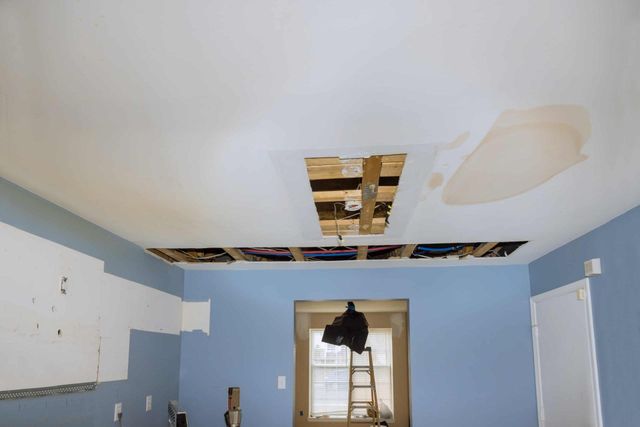The Causes of Water Damage in the Bathroom
The Causes of Water Damage in the Bathroom
Blog Article
We've uncovered the article involving How to Repair and Prevent Bathroom Water Damage? below on the internet and reckoned it made perfect sense to talk about it with you here.

Water damage usually occurs in the washroom due to the water utilized everyday. Sometimes, the damage could be a little mold from the shower. Other times, it's massive damage on your floor. Whatever it is, it is constantly great to understand the cause and avoid it before it occurs.
This overview will undergo several of the usual reasons for water damage in the restroom. We will certainly additionally examine what you can do to prevent these reasons from harming your bathroom. Let's dive in.
These are the common factors you would have water damage in your restrooms and also exactly how you can identify them:
Excess Moisture
It's great to have that lengthy shower as well as sprinkle water while you hem and haw as well as imitate you're performing, however sometimes these acts might cause water damage to your bathroom.
Splashing water around can trigger water to visit corners and develop molds. See exactly how you spread excess moisture around, and when you do it, clean it up to prevent damage.
Splits in your wall surface ceramic tiles
Washroom wall tiles have actually been particularly developed for that purpose. They secure the wall from dampness from people taking showers. Nonetheless, they are not undestroyable.
In some cases, your bathroom wall ceramic tiles fracture and also allow some wetness to seep into the wall surface. This might possibly destroy the wall if you do not take any type of activity. If you see a split on your wall surface tiles, repair it instantly. Do not wait up until it destroys your wall surface.
Overruning commodes and also sinks
As humans, in some cases we make errors that might trigger some water damage in the shower room. For instance, leaving your sink faucet on can create overflowing and also damages to various other parts of the restroom with moisture.
Additionally, a malfunctioning commode could trigger overflowing. For instance, a damaged bathroom take care of or other parts of the tank. When this happens, it could damage the floor.
As quickly as you observe an overruning sink or bathroom, call a plumber to help manage it quickly.
Burst or Dripping Pipes
There are many pipes lugging water to different parts of your shower room. Some pipelines take water to the bathroom, the sink, the taps, the shower, and numerous other places. They crisscross the small area of the shower room.
Once in a while, these pipes could obtain rustic and burst. Various other times, human action could create them to leak. When this occurs, you'll find water in the edges of your bathroom or on the wall surface.
To detect this, keep an eye out for bubbling walls, mold and mildews, or mildew. Call a professional emergency situation plumbing professional to repair this when it takes place.
Roofing Leakages
In some cases, the problem of water damage to the bathroom may not originate from the shower room. For example, a roof leak could create damage to the bathroom ceiling. You can detect the damages done by looking at the water spots on the ceiling.
If you locate water spots on your ceiling, inspect the roof covering to see if it's damaged. Then, call a specialist to help address the issue.
Final thought
Water damage to your restroom can be bothersome. However, you can handle it if you protect against a few of the reasons discussed in this guide. Call a specialist emergency plumbing technician if you discover any severe damages.
How to Prevent Water Damage in Your Bathroom?
Water damage repair is an expensive, meticulous, and lengthy process. Unfortunately, bathrooms are the most susceptible rooms to water damage due to toilets, showers, and sinks. Pipes and fixtures wear out over time and are not immune to damage. But all is not lost, as there are ways to prevent water damage from occurring in your bathroom.
Check Your Plumbing
Nothing lasts forever, especially pipes, which can rust and begin leaking over time. You should periodically conduct pipe inspections and pay attention for any musty smells or water stains that may indicate you need water damage repair. Here are some things to check:
Frequently test valves for your toilet, shower, and sink to ensure they are properly working. Check faucet supply lines hidden under vanities and replace when needed. Replace cracked or deteriorating caulking along sinks, tubs, and showers. If you notice a clog in your sink, call in a professional. Since you can’t check the pipes in the wall, keep an eye out for stains, drywall bubbling, musty smells, and excess moisture; if the bathroom is on a second level, check the ceiling of the room directly below for these signs. Don’t Overwork Your Toilet
One of the most common reasons bathrooms need water damage repair is due to overflowing toilets. Save yourself the hassle of cleanup by being mindful and not pushing your toilet to extreme limits. If you have young children, it is especially important to keep an eye on them when they are in the bathroom and to teach them how to avoid clogging the toilet. Here are some more tips to help prevent your toilet from overflowing:
If you have a septic tank, only use septic-safe toilet paper Do not flush anything down the toilet besides toilet paper; items like diapers and sanitary napkins will clog the piping Pay attention to your toilet’s water level: If it’s low, it could mean it is partially clogged or that there is a crack in the toilet bowl https://www.alure.com/home-improvements-blog/resources/how-to-prevent-water-damage-in-your-bathroom

I found that page about How to Repair and Prevent Bathroom Water Damage? when surfing the internet. Those who appreciated our page if you please be sure to pass it around. Thanks for going through it.
Certified emergency plumbing assistance available. Report this page